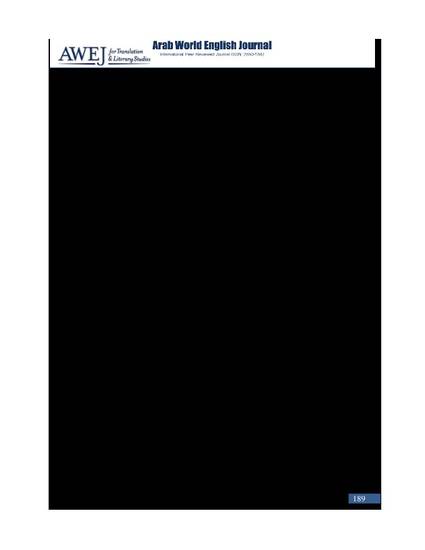
Article
Dystopian and Utopian Parallels in F. Scott Fitzgerald’s The Great Gatsby
AWEJ for Translation & Literary Studies
(2022)
Abstract
This paper analyzes both the utopian and the dystopian aspects of American society in F. Scott Fitzgerald’s (1896-1940) The Great Gatsby (1925). It aims at depicting those aspects of the society through a careful examination of the settings, particularly East egg and the Valley of Ashes. The former represents the protagonist’s ideal reality in which he dreams of becoming famous, wealthy, and more satisfied. Yet, the climax and tragic ending of Gatsby reveal the dystopian aspects of East Egg society, such as chaos, prohibition, and social disintegration. Likewise, the valley of ashes is made out of ashes, and its gray color stands for emptiness and the moral decadence of its people. The social hierarchy of the American society, along with its expectations, demoralizes its people; the worldly desires of Gatsby ruin his life as well as the future he imagines in East Egg. Thus, a state of material well-being emerged but lacking in spiritual life or purpose. Throughout the novel, Gatsby’s life and shocking manners reflect those dystopian aspects of a post-war society in which wild parties, illegal drinking, and crimes prevail. Gatsby’s dream of becoming wealthy leaves him with a painful awareness of inferiority, isolation, and ultimately death.
Keywords
- chaos,
- disintegration,
- dystopia,
- F. Scott Fitzgerald,
- moral decadence,
- prohibition,
- society,
- The Great Gatsby,
- utopia.
Disciplines
Publication Date
Spring May 15, 2022
DOI
http://dx.doi.org/10.24093/awejtls/vol6no2.14
Citation Information
Ishraq Bassam AL-Omoush. "Dystopian and Utopian Parallels in F. Scott Fitzgerald’s The Great Gatsby" AWEJ for Translation & Literary Studies Vol. 6 Iss. 2 (2022) p. 189 - 195 ISSN: 2550-1542 Available at: http://works.bepress.com/awejfortranslation-literarystudies/340/